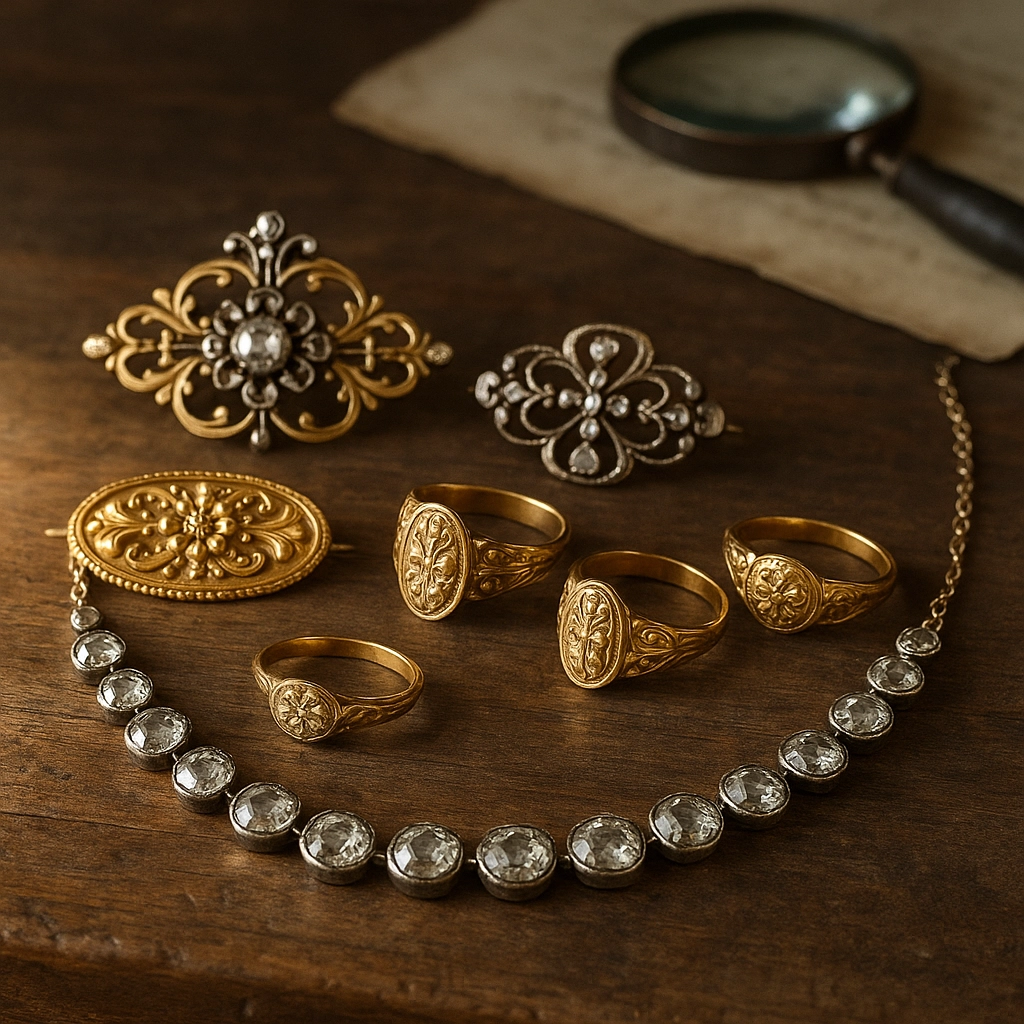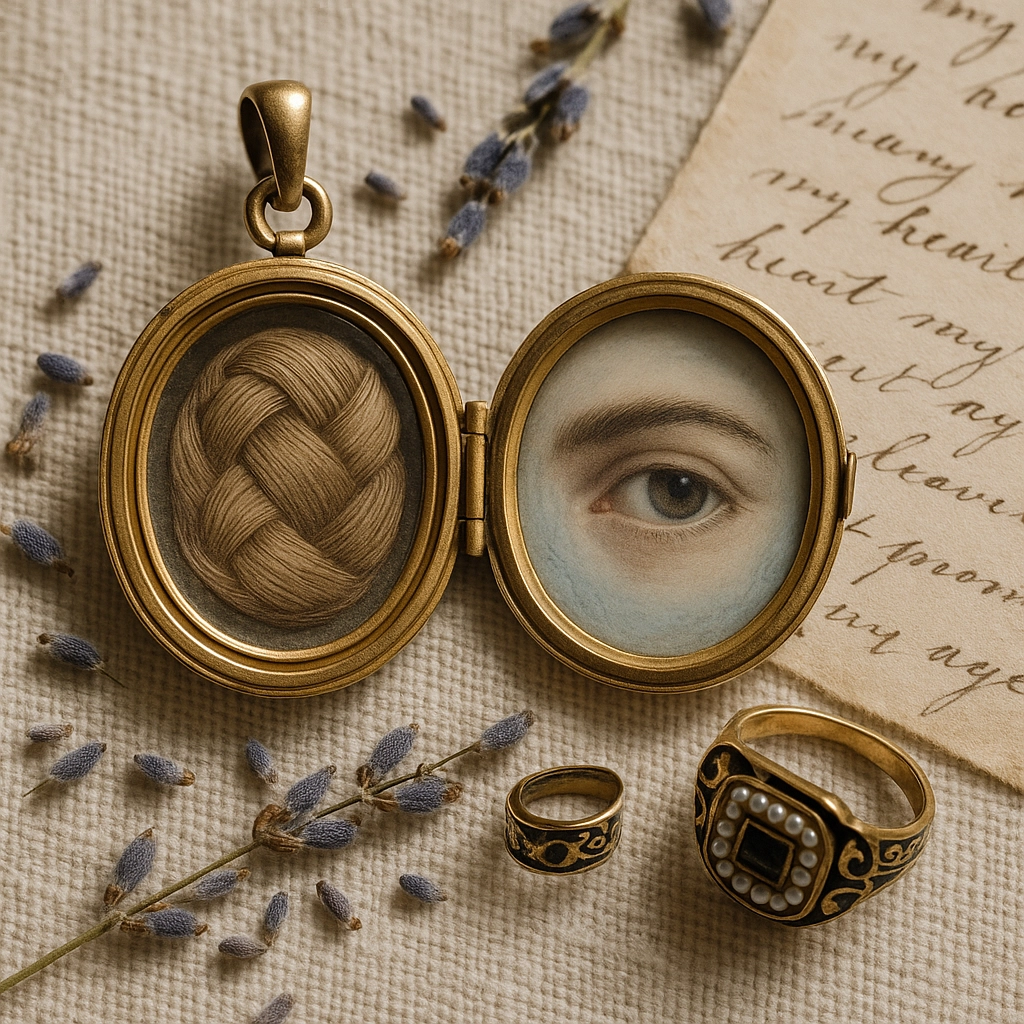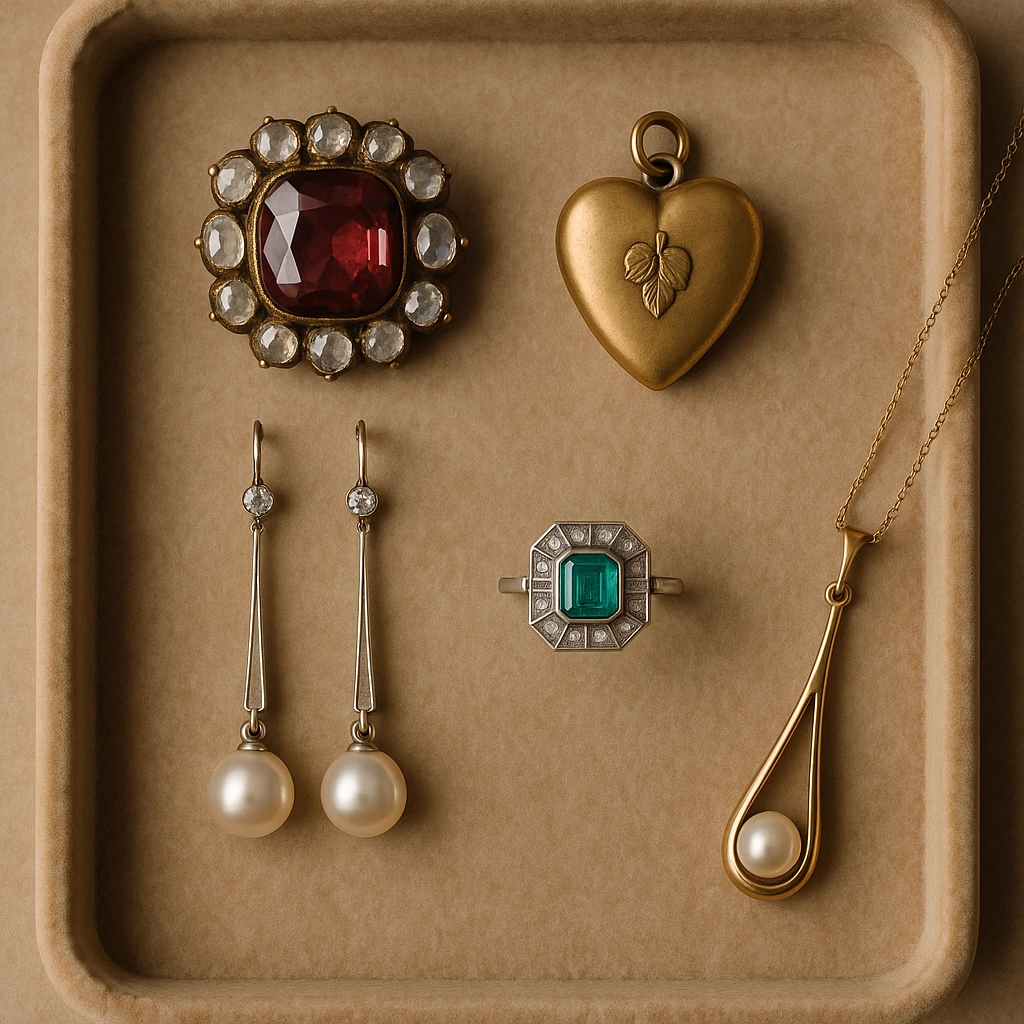Introducing Our Historic Jewelry Series: From Georgian Beginnings to Modern Classics
Have you ever held an antique ring up to the light and wondered about its story—who made it, who wore it, and how it ended up on your finger today? If, like me, you’re mesmerized by the glimmer of the past, you’re in for a treat. Today, I’m launching Peter’s Vaults’ Historic Jewelry Series, a deep dive into the jewelry styles that have shaped tastes and captured imaginations across centuries.
Whether you’re dreaming of breathtaking necklaces fit for an Austen heroine, drawn to the drama of Art Deco, or simply curious about how a 14k gold brooch traveled through time, this series is your insider’s guide through the fascinating eras of jewelry history. My goal is simple: to share insights and spark curiosity, using trusted sources like Antique Jewelry University, The Jewellery Editor, and Christie’s, and not to sell you a thing.
What to Expect From This Series
We’ll journey through five major stops, each one representing a jewelry era that left its mark on style, innovation, and self-expression:
- Georgian Era (1714–1837)
- Victorian Era (1837–1901)
- Edwardian Era (1901–1910)
- Art Deco Era (1920s–1930s)
- Modern Classics (1940s to today)
You’ll see how tastes shifted with new discoveries, changing social trends, and the march of technology. I’ll be pointing out cool historical tidbits, highlighting materials and design motifs, and sharing original period illustrations and photographs where possible.
So, whether you’re wearing a family heirloom right now or browsing vintage earrings online, keep your jewelry box nearby—you might spot a style from your favorite era.
Setting the Stage: Why Historic Jewelry Matters
Jewelry isn’t just “bling.” It’s wearable history. Each pendant, bracelet, or brooch reveals something about the era it came from: what people valued, how technology evolved, the symbolism they cherished, and even which monarch was on the throne at the time!
The act of making jewelry was once the pinnacle of skill and artistry, with each gemstone set by hand, each pattern a testament to patience and precision. Honestly, I find myself wondering: if our jewels could talk, what stories would they tell? Who hid a lock of hair in a mourning locket? Who gave a garnet necklace as a secret sign of love?
If you’ve ever asked yourself those questions, you’re definitely in the right place.
The Georgian Era: A Foundation of Glitter and Symbolism (1714–1837)
We kick off our series with the earliest era in our line-up: the Georgian period. This phase, named for four English kings named George, was defined by elegance, inventiveness, and—sometimes—intrigue. Let’s set the scene.
Materials and Master Craftsmanship
If you’re picturing chunky, rough-cut rings, think again! Georgian jewelers were true artists. Goldsmiths and silversmiths used only high-karat metals (most 18k or above, but the gold was often softly hued, not the deep yellow you see in modern 24k).
For those fascinated by metalwork, the era is a goldmine (pun intended!). Techniques like repoussé—where designs are hammered out from the back to create three-dimensional patterns—and cannetille—intricate wirework resembling fine embroidery—allowed artisans to create incredibly delicate, lacy effects.
It wasn’t just gold and silver either. The Pinchbeck alloy—a blend of copper and zinc—offered an affordable but beautiful alternative, and you’ll also spot cut steel and iron pieces (some so finely made, they could pass as diamonds at dusk). It always amazes me that all of this was achieved long before electricity or mass production.

Distinctive Looks: Nature, Symbolism, and Candlelight Sparkle
One thing you’ll notice about Georgian jewelry: it’s incredibly romantic. Pieces feature floral sprays, feather plumes, leafy tendrils, and—my personal favorite—the mysterious “lover’s eye” miniatures. Sentimental motifs aren’t just a hallmark of Victorian times; they were alive and well in the Georgian period, too.
Designers took full advantage of candlelit evenings. Gemstones were set in closed-back mounts, often backed with foil to maximize shimmer under soft light (the diamond "rivière" necklace is a classic example—tiny, hand-cut diamonds linked in a chain that sparkled in the ballroom).
Gemstone cuts were softer, too: expect to see rose cuts, old mine cuts, and table cuts rather than the precision sparkle of modern brilliants. Sapphires, garnets, rubies, and pearls complemented diamonds for sometimes daring color combinations.
If you look closely at a Georgian brooch or locket, you might spot a hidden locket of hair or an inscription—a little human connection reaching out across time.
Further Reading:
- Antique Jewelry University: The Georgian Era
- The Jewellery Editor’s overview on How gemstones were foiled for candlelight charm
Mourning Jewelry and Memento Mori
You can’t talk about Georgian jewelry without mentioning its intimate role in remembering loved ones. Memorial jewelry gained popularity, especially after the death of Queen Charlotte. Pieces often included elaborate woven hairwork, black enamel, pearls (symbolizing tears), or tiny painted skulls and hourglasses—a tangible reminder to “seize the day.” If you think jewelry’s just for glamour, these artifacts will definitely make you think again.

What Comes Next: Through the Victorian Spotlight and Beyond
As we travel forward, we’ll see how technological advancement, new gemstone discoveries, and shifting social tides gave rise to bold new styles.
- The Victorian era (up next) saw romantic family pieces, the gothic revival, and—thanks to the Gold Rush—an explosion of creative experimentation.
- The Edwardian era embraced platinum, pearls, and filigree so delicate, it looked like lace (all made possible by new technologies and a hunger for refinement).
- In the Art Deco years, everything changed: geometry, color, global influences, and the thrill of modernity.
- And in our Modern Classics chapter, I’ll highlight how the spirit of past eras still shapes jewelry today, whether you’re into mid-century charm or trendsetting minimalism.
If you want to explore in advance, check out respected sites like Christie’s Jewellery Guides, or browse the archives at The Jewellery Editor.

Why I’m Sharing This Series
At Peter’s Vaults, the goal is simple: I want you to see jewelry the way I do—not as accessories, but as tiny time machines. There’s value in understanding the origins of that family ring or cufflink; there’s joy in spotting a centuries-old design in a friend’s necklace.
So, as we start this series, maybe pull out a forgotten piece from your jewelry box. Take a close look. Is there a story there? A hidden date, an engraving, maybe even a lock of hair? (Not as odd as it sounds, I promise!)
Whether you’re a collector, a casual admirer, or someone who just loves a good story, my hope is you find something here that makes you smile, wonder, and appreciate the quiet magic of jewelry history.
Stay tuned—our next post will take a deep dive into the world of Georgian jewelry, where I’ll go even deeper into the masterful details, the colorful personalities, and (of course) plenty of sparkling gems that define this fascinating era.
Cheer,
Peter
For more historical background and evolving jewelry styles through the ages, I’ll be leaning on excellent resources like Antique Jewelry University, The Jewellery Editor, and Christie’s, whose scholarship and archives make this kind of exploration possible.